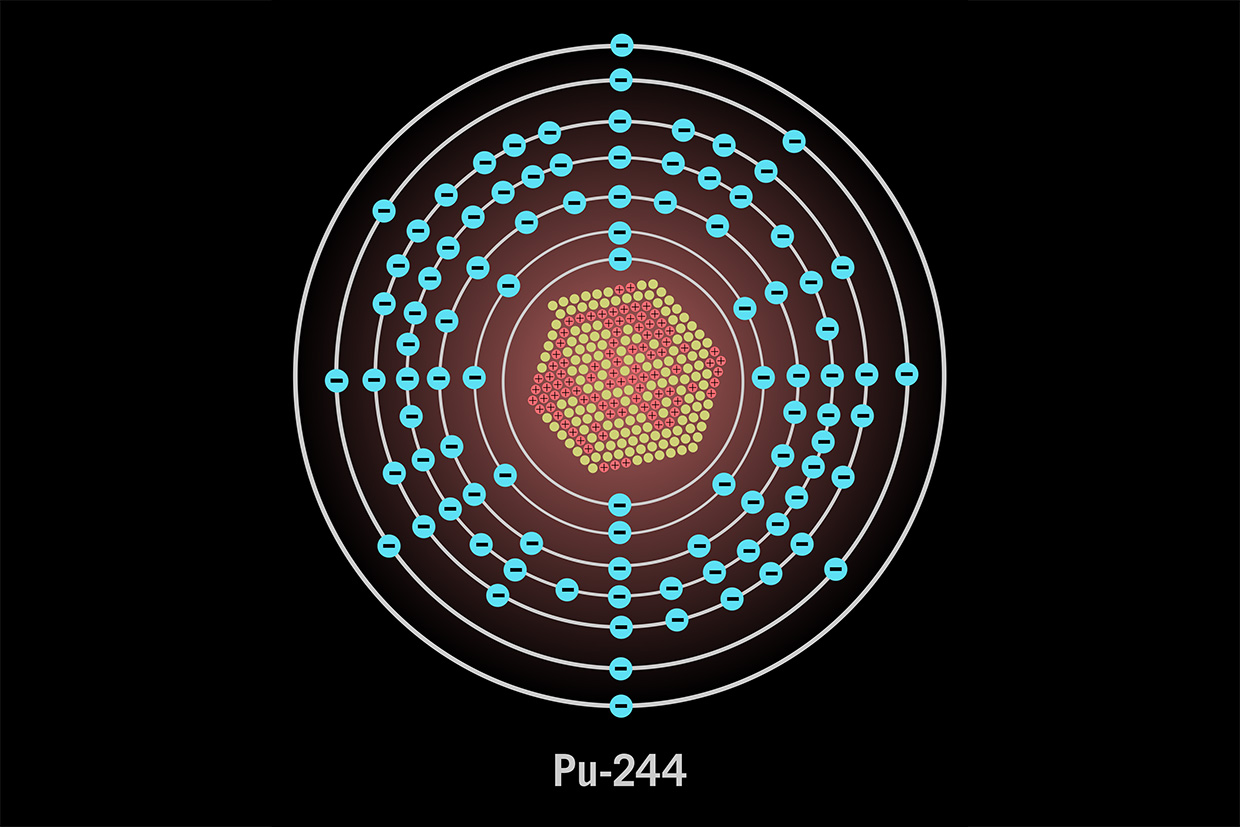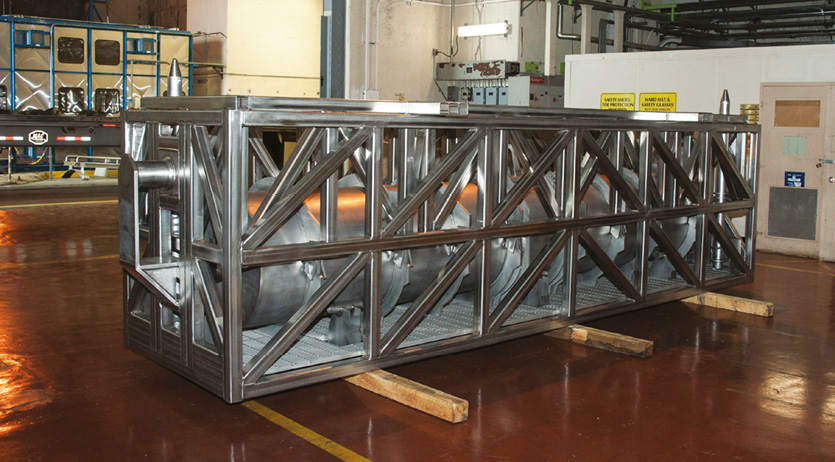Savannah River National Laboratory MK-18 program prevents critical isotopes from being lost
“The focus now is the preservation of the remaining Pu-244 in the remaining targets for eventual recovery and purification.” – Bill Bates, SRNL Deputy Associate Director E&LM

graphic: Susanna King, SRNL
Rare plutonium isotope (Pu-244) might not be seen again on Earth if not for important SRNL mission
For decades the Savannah River Site (SRS) has stored irradiated MK-18 target assemblies, produced in SRS nuclear reactors during the Cold War. A 2014 National Nuclear Security Administration (NNSA) sponsored collaboration between SRNL and Oak Ridge National Laboratory (ORNL) brought the stored material back into focus as a rare and valuable resource to benefit research and analysis in nuclear non-proliferation national defense missions.
The primary isotope of interest from the MK-18 program, Plutonium-244 (Pu-244), is both very rare and stable. It is extremely important as a certified reference material in nuclear forensics and non-proliferation related applications. Pu-244 is mostly found in outer space, so it is hard to come by and is highly sought after as a plutonium source. The U.S. supply is very low. What remains came from other MK-18 targets that were processed to recover the rare isotope in the 1970s.
Using material that would otherwise go to waste
The MK-18 program is a prime example of the essential environmental and legacy management work performed at SRNL.
MK-18 refers to physical components once used in production reactors. “Back in the ‘70s, a small number of the MK-18 targets were sent to Oak Ridge National Lab for recovery of the Pu-244 and the rest stayed at SRS in storage,” says Bill Bates, deputy associate laboratory director for the Environmental and Legacy Management Directorate at SRNL. “The focus now is the preservation of the remaining Pu-244 in the remaining targets for eventual recovery and purification.”
The U.S. inventory is down to the last one or two grams of separated Pu-244. The country needs more of it.
“We’re performing a beneficial reuse mission — to recover material from something that otherwise would’ve simply gone into the waste stream,” says Bates.
The team plans to recover about 20 grams of Pu-244 from the remaining MK-18 target assemblies. If not recovered, the material would be dissolved and would go into waste, effectively lost forever as a usable certified reference material.
Entering a new phase
In the next few months, the MK-18 program team will start moving process equipment into SRNL’s shielded cells. It is a readiness phase to ensure the material can be properly removed from storage, shipped to the lab, and moved into the shielded cells in accordance with SRNL’s high safety standards. “We won’t have our actual ‘hot start’ with a real MK-18 assembly until May 2024,” says Bates.
The team has completed cold testing in a separate SRNL facility, involving a full pilot mockup before the readiness phase. Mock assemblies were cut and dissolved, with the full process simulated using non-nuclear materials. The use of a full-scale pilot mockup is a best practice that has proven beneficial in preparing the hardware and allowing staff to gain familiarity with it prior to going into the shielded cells.
Three of 16 shielded cells at SRNL will be used do the actual “hot” operations. The first will be where the target assemblies are transitioned in and cut, the second will be where all the dissolution and separations will be performed, and the third cell will be where waste and final product materials are packaged for removal from the cells.
A secondary benefit of the MK-18 program is the recovery of curium to reduce waste disposal impacts. Additionally, the curium can be used at ORNL’s High Flux Isotope Reactor to produce Californium-252, which is used as a source in numerous instruments that perform nuclear material measurements.
SRNL will do the front-end work of processing the MK-18 and recovering the plutonium (including the Pu-244) and the curium. ORNL, a close collaborator since the 2014 mission start, is envisioned to perform the isotopic separation and purification of the curium and will store the plutonium for future purification.
“This program is a great example of using SRNL competencies and capabilities — our knowledge and experience with radiochemistry, chemical separations and packaging technologies — to recover assets from legacy nuclear materials that can support a range of national needs, particularly in the national security arena” says Bates.

A cask for carrying MK-18 targets. photo: Savannah River Site Photography